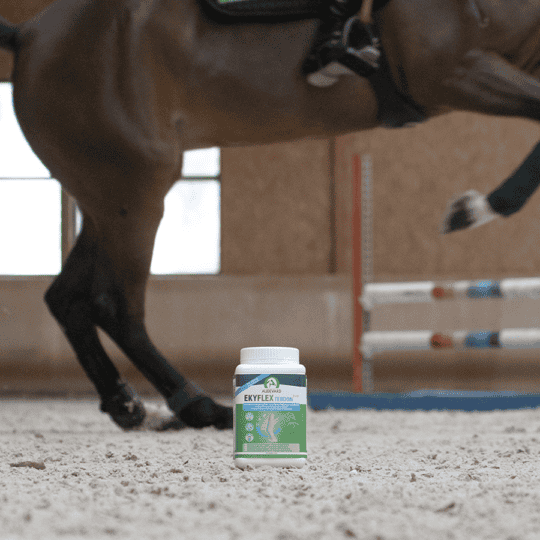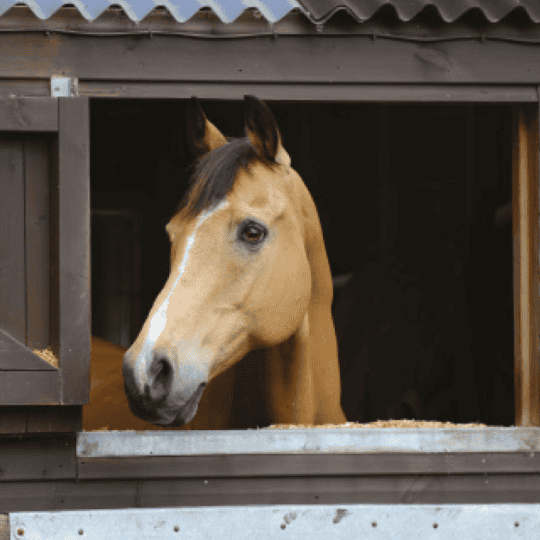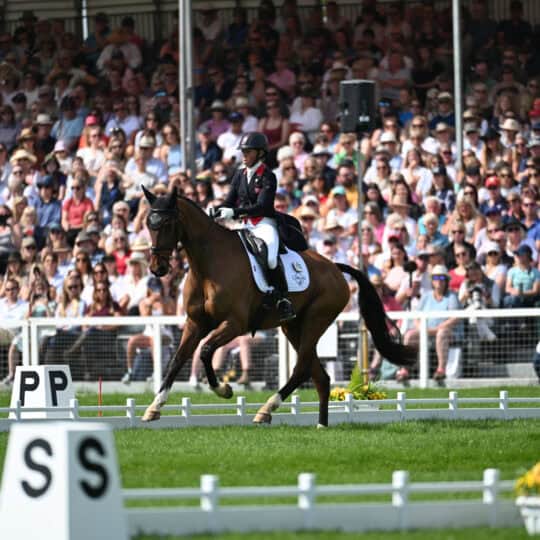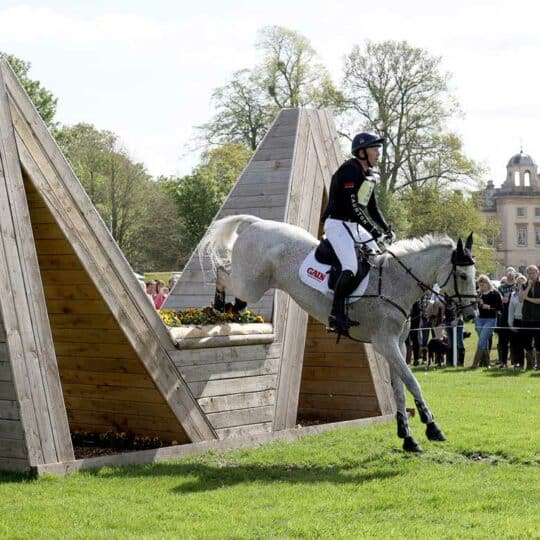You’ve spent hours agonising over bucket feed and hundreds of pounds on supplements – but is your forage letting your horse down? H&R is on a mission to find out
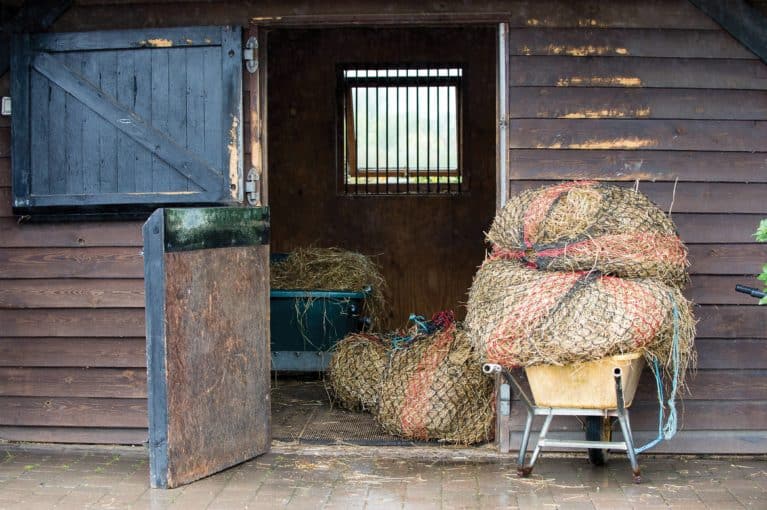
Your horse’s forage ration is the most important part of his diet – after all, it makes up the majority of what he consumes throughout the day. But have you ever thought about the way you supply this essential ration and the potential effects of your chosen method? We’ve enlisted four experts to answer some of the most common forage-related questions and revolutionise your routine.
A veterinary viewpoint
My horse requires some special management to keep him comfortable due to an underlying condition. Should I be feeding him forage in a certain way to aid his treatment?
Sussex Equine Hospital vet, Natasha Jocelyn MA VetMB MvetMed DipECEIM MRCVS answers:
Gastric and lower respiratory health, teeth and neck pain could all be affected by the way a horse forages. Specific clinical conditions may prompt veterinary surgeons to advise one method over another. But the effect of a haynet, hay bar or loose, floor-fed hay differs across your horse’s body…
- respiratory system When your horse is eating from a haynet his head is held in an upright position, with his nostrils close to a dense quantity of forage. This can increase the exposure to airway allergens in the form of pollen or spores. For horses who suffer from equine asthma, this can be a major trigger, whereas feeding from a clean floor may allow for better air circulation. Plus, in situations where a horse is forced to keep his head up for long periods of time – for example, travelling without breaks – there’s an increased risk of conditions such as shipping fever, which is a type of pneumonia caused by bacteria invading the lungs. When his head is down any secretions from his lower airway can drain more effectively, maintaining the important defences located there
- teeth Type of feed tends to play more of a role in dental wear than method of feeding, though horses who have some dental issues may find it easier to eat hay or haylage loose from the floor, rather than having to pull it from a net
- digestive system Equine gastric health relies on the simple tenet of little and often – so providing a plentiful supply of forage that can be trickle-fed is key. Many horses will pace themselves while eating floor-fed hay, but some may eat more quickly, meaning that they spend more time without any forage to nibble on. For these horses, supplying hay in a small-mesh net or in multiple nets can help slow the rate of consumption and extend the trickle-feed period
- spine The effect of eating from the floor versus a haynet on the spinal processes can vary depending on any pre-existing conditions. For example, horses suffering from osteoarthritis of the neck may find it easier to eat at a height, rather than from the floor. If you’re unsure, speak to your vet – they’ll be able to advise you on the necessity of forage elevation, whether that relies on a haynet, a manger or a hay bar system
Physio-friendly feeding
I’ve always fed my horse from a haynet because that’s what everyone on my yard does – but could this be contributing to tension in his back?
Veterinary physiotherapist, Suzannah Povey-White BSc DipPhys answers:
Biomechanically and environmentally, horses are designed to feed with their heads down for 80% of their active feeding time while maintaining near-constant motion. This head-down position has evolved to open the horse’s airways and the feeding apparatus, allowing his nasal passages to drain and producing sufficient saliva to assist with chewing and provide a barrier to stomach acid.
All of these adaptations are compromised when you feed a horse from a haynet hung at chest height or higher. Your horse will repeatedly tear the hay in one direction, and will have his head continuously in alert positioning, which causes all sorts of biological changes to happen further back in his body. These can include asymmetrical muscle development, which creates tension in the back and neck, ultimately resulting in issues if left unchecked.
The ideal scenario is to replicate a horse’s natural environment as closely as possible. Recent research suggests that 20% of a horse’s grazing time is done at head height with front feet parallel, which counters the stance of the grazing horse, which generally sees one leg forward. With this in mind, owners can do the following…
- feed two or more smaller nets hung at different heights in the stable, encouraging movement
- feed from the floor or from a hay bar
- enrich your horse’s environment by replicating foraging by using treat balls or hiding carrots in his bedding, for example
- allow access to larger spaces if possible to increase movement as he forages
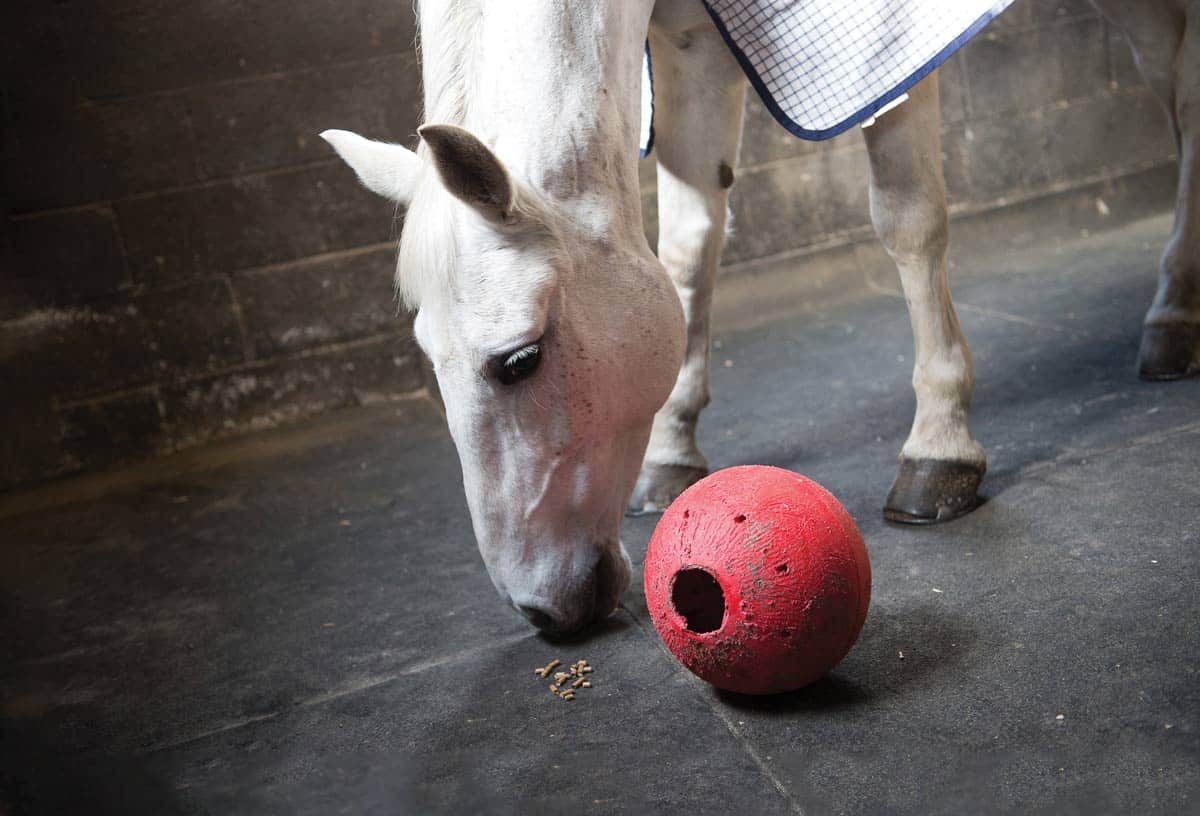
Ensuring the balance
I’ve always heard that ad-lib forage is the best way to feed horses, but mine is a good-doer. How can I balance feeding him ad-lib without overloading his calorie intake?
Independent equine nutritionist Donna Case answers:
We all know the importance of feeding as much forage as possible, but for good-doers this just isn’t always possible. For these horses, you need to get the balance just right, ensuring you feed enough to keep his digestive system healthy and his brain occupied while avoiding packing him full of unnecessary calories. The ideal solution? Follow a few basic principles to maximise the forage you feed.
First, you need to minimise the calories administered in your horse’s hard feed ration so you can feed as much forage as possible. Choosing a broad spectrum, low-calorie balancer will allow you to provide the necessary vitamins, minerals and quality protein, without excess calories. Alongside this you can add a suitable fibre-based product to bulk the feed out, which will contribute to his forage intake and also take him longer to eat it.
Secondly, consider your horse’s grazing. If he’s turned out for a significant amount of time each day, he’ll be taking in a lot of calories from grass. This can be hard to control, so if you want to regulate his calorific intake, it may help to move him into a starvation paddock or surfaced turnout area. Then, you can feed the necessary forage and have a much better idea of his intake.
When selecting a hay source for your horse, don’t make assumptions about the cut – for example, many people think that a later cut is considerably lower in sugar content and calories, but that’s not necessarily always the case. If you want to reduce sugar levels, soaking hay is a good step. The longer you soak it for, the more nutrients will be stripped out. You can soak your hay for up to six hours in the summer months or up to 12 in winter, when there’s less risk of fermentation, for the best results. Alternatively, speak to your feed manufacturer about low-calorie hay replacement options, which you can use in tandem with a smaller hay ration or in place of it entirely.
While you may not be able to provide your good-doer ad-lib forage in the usual sense, it’s possible to make up for this by feeding little and often so he’s rarely left standing idle. Using double haynets can also slow him down, ensuring a steady intake of smaller amounts of forage.
Keep it natural while nurturing
I’m worried that my horse might be bored. Is there any way to supply his forage that will also provide him with some natural stimulation?
Anna Haines answers:
Horses are trickle feeders, which means they’re designed to eat for between 16–18 hours per day, the basis of the phrase ‘little and often’. They also evolved to eat a range of different foodstuffs, not a diet of only rich grass, and naturally would browse on a variety of plants. Reseeding his field with a pasture mix can reintroduce this.
To ensure your horse can carry out natural browsing behaviour in the field, you can provide him with access to a selection of horse-safe loose branches to rummage through. If you own the field, consider planting trees or hedges, which create a natural playground for browsing behaviours. Popular horse-safe options include…
- hazel
- hawthorn
- beech
- silver birch
- willow
- maple
- poplar
- alder
These can be used in the stable, too. Wood chewing, in moderation, is a natural behaviour for horses, so providing an outlet for this can prevent your stables and fences from being chewed while enriching his environment. Branches can either be placed on the floor or hung at different heights, which allows your horse to move and stretch his body in different ways while he’s inside.
Movement is an important part of foraging and grazing behaviour. In natural conditions, horses typically eat on the move, covering large distances as they do so. For this reason, particularly when grazing is limited and extra forage has to be supplied, it’s recommended to always provide as many small piles of hay or haylage as possible around his field. This encourages movement, prevents horses from congregating in one area and also minimises the risk of arguments between fieldmates.
If a horse is on box rest or stabled for part of the day or night, providing nets with different types of forage such as hay, haylage, barley straw or weeds – such as cow parsley and nettles – in different places around the stable can also help to provide some variety, as well as encouraging a small amount of movement between them. Prolonged stabling – particularly in the case of box rest – can be stressful for your horse, so it’s important to ease this by providing enrichment within his four walls. Consider…
- swapping to straw bedding to allow for some natural foraging behavior
- hiding healthy treats, such as carrots, in his bedding so he has to search for them
- sprinkling his bucket feed over his stable floor or, if he’s on straw, putting it in his bedding, too, as this will slow him down and create a more natural environment









